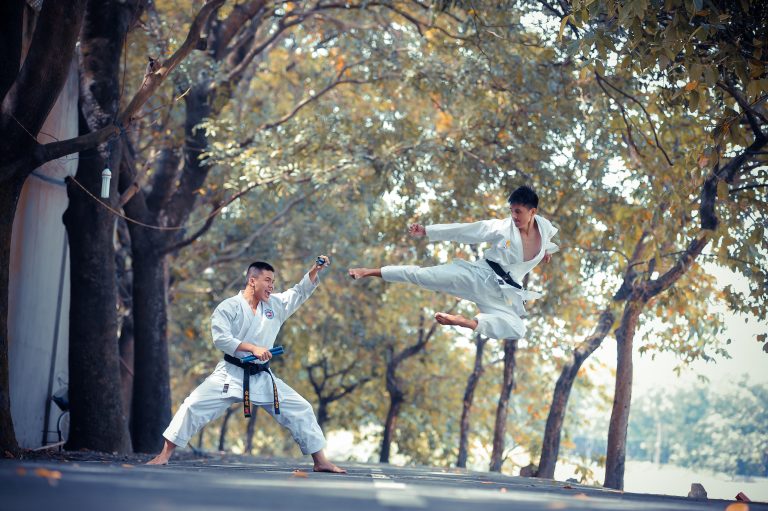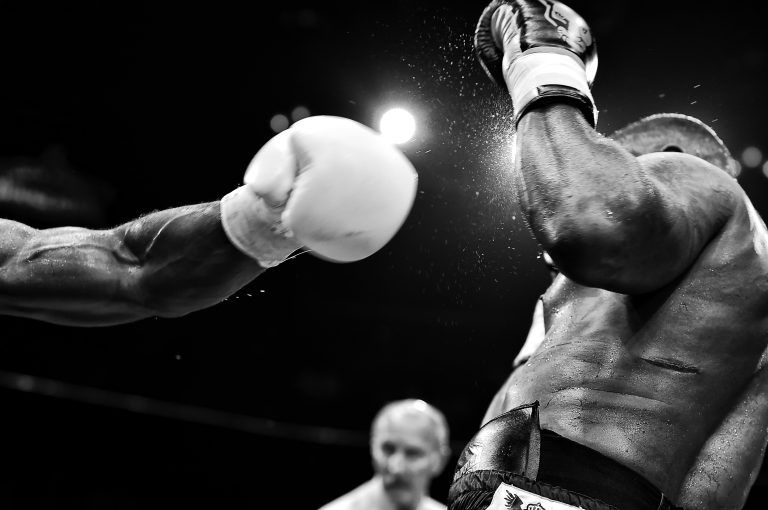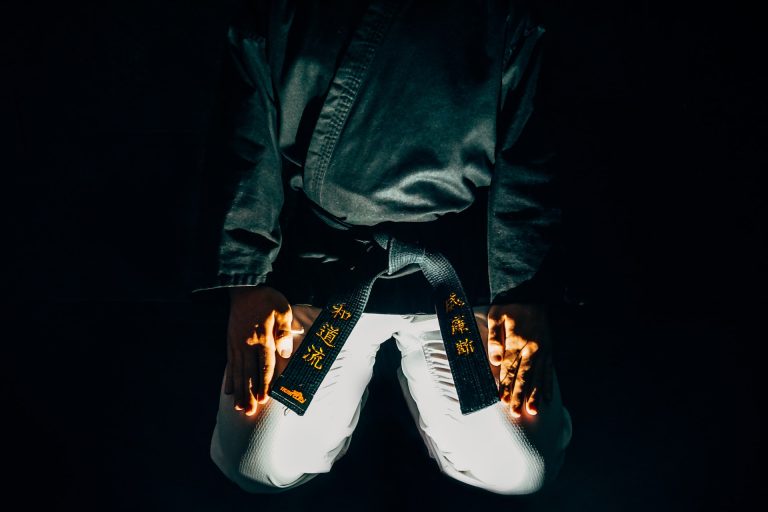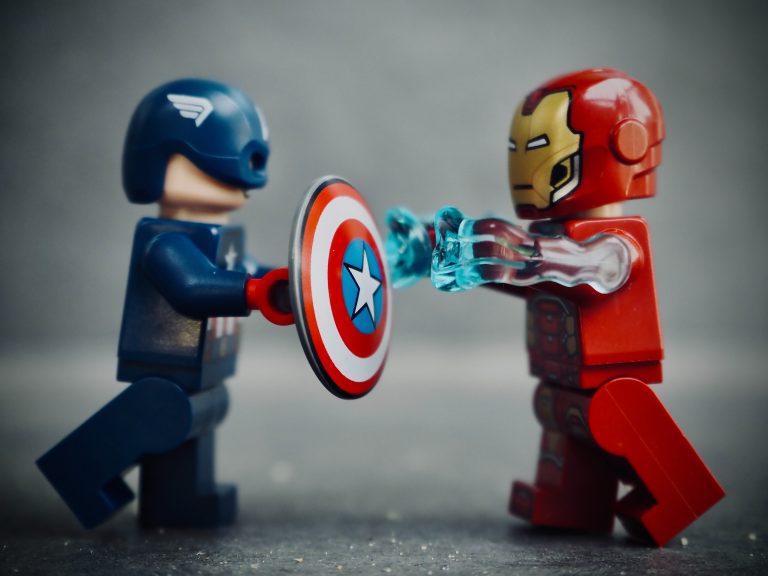The Karate Kid Rules: 10 Lessons from the Classic Film
Few movies have had as much cultural impact as the 1984 classic „The Karate Kid“. The movie has inspired countless people to take up martial arts and learn the valuable lessons taught by Mr. Miyagi. But what are the actual rules that the movie teaches? In this post, we will break down the 10 most important lessons from „The Karate Kid“ and explain how they apply to our lives.
1. Confidence is key
The first lesson that „The Karate Kid“ teaches us is that confidence is key. Throughout the movie, Daniel struggles with self-doubt as he tries to navigate a new school and make friends. But it is only when he starts to believe in himself that he is able to succeed in karate.
This lesson applies to all areas of life. Whether you are trying to achieve a new goal, start a new business, or just navigate a difficult situation, having confidence in yourself is crucial. As Mr. Miyagi says, „you trust the quality of what you know, not quantity.“
2. Practice makes perfect
Another important lesson from „The Karate Kid“ is the importance of practice. Mr. Miyagi teaches Daniel that the secret to becoming a great fighter is not flashy moves or strength, but instead consistent practice and repetition.
This lesson applies to all aspects of life. Whether you are trying to master a new skill or improve your performance in a specific area, practice is key. The more you do something, the better you will become. As Mr. Miyagi says, „being still and doing nothing are two very different things.“
3. Never give up
One of the most iconic scenes in „The Karate Kid“ is when Daniel is injured during the tournament and can barely stand. But he refuses to give up, and with Mr. Miyagi’s encouragement, he continues to fight.
This lesson is perhaps the most important of all. No matter how difficult a situation may seem, never give up. Perseverance and determination can overcome even the toughest obstacles. As Mr. Miyagi says, „man who walk in road, no fear.“
4. Choose your battles
Another lesson from „The Karate Kid“ is the importance of choosing your battles. In the beginning of the movie, Daniel gets into a fight with a group of bullies who relentlessly harass him. But Mr. Miyagi teaches him that sometimes the best way to win a fight is to avoid it altogether.
This lesson applies to all areas of life. Not every battle is worth fighting, and sometimes the best thing you can do is walk away. As Mr. Miyagi says, „Best block, no be there.“
5. Respect your opponent
Another important lesson from „The Karate Kid“ is the importance of respecting your opponent. Throughout the movie, Mr. Miyagi emphasizes that karate is not about fighting or winning, but about respect and balance.
This lesson is particularly important in today’s divisive political climate. It is possible to disagree with someone and still show them respect. As Mr. Miyagi says, „man who catch fly with chopstick accomplish anything.“
6. Stay calm under pressure
One of the key moments in „The Karate Kid“ is when Mr. Miyagi teaches Daniel how to breathe and stay calm under pressure. This skill proves essential in the tournament when Daniel must face his toughest opponent yet.
This lesson applies to all areas of life. When we are faced with difficult situations, it is easy to feel overwhelmed and lose our composure. But by staying calm and focused, we can make better decisions and overcome any challenge. As Mr. Miyagi says, „the key to strength is inside.“
7. Focus on the present moment
Another lesson from „The Karate Kid“ is the importance of focusing on the present moment. Throughout the movie, Daniel struggles with anxiety about the future and regrets about the past. But Mr. Miyagi reminds him that the only moment that truly matters is the present.
This lesson is particularly relevant today when we are bombarded with distractions and demands on our time. By focusing on the present moment, we can reduce stress and anxiety and improve our overall well-being. As Mr. Miyagi says, „in Okinawa, belt mean no need rope to hold up pants.“
8. Find balance in your life
Another important lesson from „The Karate Kid“ is the importance of finding balance in your life. Mr. Miyagi teaches Daniel that karate is not just about physical strength, but also mental and emotional balance.
This lesson applies to all areas of life. It is important to find a balance between work and play, personal and professional responsibilities, and physical and mental health. By finding this balance, we can live happier and more fulfilling lives. As Mr. Miyagi says, „better learn balance. Balance is key. Balance good, karate good. Everything good.“
9. Learn from your mistakes
Another key lesson from „The Karate Kid“ is the importance of learning from your mistakes. Throughout the movie, Daniel makes numerous mistakes and faces setbacks. But with each failure, he learns and grows stronger.
This lesson applies to all areas of life. We all make mistakes, but it is important to use these experiences as opportunities to learn and grow. By embracing failure, we can become more resilient and successful in the long run. As Mr. Miyagi says, „First learn stand, then learn fly.“
10. Believe in yourself
Finally, perhaps the most important lesson from „The Karate Kid“ is the importance of believing in yourself. Throughout the movie, Daniel faces doubts and fears, but it is only when he starts to believe in himself that he is able to achieve his goals.
This lesson applies to all areas of life. No matter how difficult a situation may seem, it is important to believe in yourself and your abilities. With confidence and determination, anything is possible. As Mr. Miyagi says, „never trust spiritual leader who cannot dance.“
In conclusion, „The Karate Kid“ is more than just an entertaining movie. It is a timeless classic that teaches us valuable lessons about life, love, and the pursuit of happiness. By understanding and embracing these lessons, we can become better martial artists and better people. As Mr. Miyagi says, „karate for defense only.
Frequently Asked Questions About Karate Kid Rules
Karate Kid is an iconic movie that continues to inspire and educate children and adults alike about the principles of martial arts. Since its release in 1984, people have been asking a lot of questions about the movie’s rules and the martial art form it portrays. In this article, we’ve compiled some of the most asked questions about Karate Kid rules and answered them with accurate information.
1. What type of karate does Mr. Miyagi teach?
Mr. Miyagi teaches the fictional martial art form called „Miyagi-Do Karate.“ It is a blend of different styles of traditional karate, emphasizing defense over offense, and promotes the idea that martial arts should be used for personal growth and enlightenment.
2. What are the basic Karate Kid Rules?
The basic rules of Karate Kid are simple: „Karate is for defense only.“ The movie taught viewers that martial arts should not be used for aggression or violence. Additionally, there are specific techniques taught by Mr. Miyagi, such as the „crane kick,“ which are used for fighting opponents in a tournament setting.
3. What is the importance of „wax on, wax off“ in Karate Kid?
„Wax on, wax off“ is a fundamental exercise that Mr. Miyagi uses to teach Daniel LaRusso how to block and defend himself against attacks. By using repetitive movements of polishing cars, Mr. Miyagi teaches the importance of muscle memory, which is a crucial aspect of martial arts training.
4. Was the crane kick a legal move in the Karate Kid tournament?
Yes, the crane kick was a legal move in the Karate Kid tournament. Despite the objections of the Cobra Kai Dojo, the judges deemed the move legal, and Daniel won the tournament fair and square.
5. Were the Cobra Kai Dojo’s actions realistic in Karate Kid?
The actions of Cobra Kai Dojo, particularly Johnny Lawrence, are exaggerated and stereotypical. However, they do reflect a real issue in martial arts: some schools and practitioners only focus on offensive techniques and winning at all costs, which can lead to more aggressive behavior.
6. Is Karate Kid an accurate depiction of martial arts?
Karate Kid is a fictional story and should not be taken as an accurate representation of martial arts. However, the movie’s themes and lessons are grounded in real martial arts principles and values, such as discipline, respect, and humility.
7. What is the „sand the floor“ technique in Karate Kid?
The „sand the floor“ technique is another exercise Mr. Miyagi uses to teach Daniel about martial arts. It involves using circular motions to sand a wooden floor with sandpaper. The exercise helps Daniel develop the necessary muscles and movements needed for defense.
8. Can karate be used in real-life situations?
Yes, karate can be used in real-life situations, but it should only be used for self-defense purposes. Karate, like any martial art form, teaches the practitioner discipline and respect, as well as techniques to help them stay safe in dangerous situations.
9. Were the Karate Kid sequels as good as the original?
The three Karate Kid sequels (The Karate Kid Part II, The Karate Kid Part III, and The Next Karate Kid) are subjective, and opinions differ among fans. However, none of them have the same impact as the original film, which became a cultural phenomenon.
10. What are some misconceptions about Karate Kid?
One significant misconception is that the movie promotes violence and aggression. In reality, Karate Kid teaches the exact opposite: that martial arts should be used for defense only and never for aggression. Another misconception is that the martial arts techniques shown in the movie are easy to learn quickly. In reality, martial arts takes years of hard work, dedication, and discipline to master.
In
How to Follow the Karate Kid Rules – A Step-by-Step Guide
If you’re a fan of the iconic 1984 movie „The Karate Kid,“ you probably remember the five rules Mr. Miyagi instructed Daniel-san to follow. These rules not only helped Daniel learn karate but also valuable life lessons. Here’s how you can follow the Karate Kid rules too:
Rule #1: „Karate is for defense only.“
This rule teaches us to use martial arts to protect ourselves and never to use our skills for violence. Here’s how you can follow this rule:
1. Take a martial arts class: Find a reputable martial arts school near you and learn techniques for self-defense. Remember that these skills should only be used in situations where your safety is at risk.
2. Practice self-control: Just like in karate, we should only use our words and actions when necessary to defend ourselves. Avoid getting into fights or escalating arguments.
Rule #2: „First learn stand, then learn fly.“
This rule reminds us that we must start with the basics before trying advanced techniques. Here’s how you can follow this rule:
1. Set achievable goals: Break down your ultimate goal into smaller, achievable steps. For example, if you want to become a black belt in karate, you must first master the basic techniques.
2. Practice consistently: Dedicate time each day to practice and improve your skills. With consistent practice, you’ll eventually be able to progress to more advanced techniques.
Rule #3: „Always look eye.“
This rule emphasizes the importance of maintaining eye contact, which demonstrates respect and confidence. Here’s how you can follow this rule:
1. Make eye contact: When speaking with someone, make sure to look them in the eyes. This shows that you’re engaged in the conversation and that you respect the other person.
2. Avoid distractions: Don’t let your phone or other devices distract you when you’re communicating with someone. Focus on the conversation at hand.
Rule #4: „Learn to breathe.“
This rule encourages deep breathing, which can help us relax and maintain focus. Here’s how you can follow this rule:
1. Practice deep breathing: Take a few minutes each day to practice deep breathing exercises. Inhale deeply through your nose and exhale slowly through your mouth. This can help you feel more relaxed and centered.
2. Use breathing techniques during stressful situations: When you’re feeling anxious or stressed, take a moment to focus on your breathing. This can help you calm down and maintain focus.
Rule #5: „Do not forget rule number one.“
This final rule reminds us to always prioritize the first rule: karate is for defense only. Here’s how you can follow this rule:
1. Stay true to your values: Don’t compromise your values or beliefs, even in difficult situations. Remember that violence is never the solution.
2. Use your skills wisely: If you ever find yourself in a situation where you need to defend yourself, use your skills wisely and only to protect yourself.
In conclusion, following the Karate Kid rules can help us become better martial artists and better people. By applying these lessons to our daily lives, we can cultivate values like respect, self-control, and perseverance. So, go ahead and practice the Karate Kid rules, but always remember that Karate is for defense only.
Inhaltsverzeichnis






